There is an improved plan to bring the factories and power systems to manufacture nanorods on Mars and create an intense global warming effect.
A few dozen SpaceX Starships would be ready to bring factory equipment, mining equipment and nuclear or solar energy to manufacture 1.5 million tons of nanorods to warm the atmosphere of Mars by 10 Degrees Celsius by 2050 if we started by 2030.
The identified artificial aerosols would be 10,000 times more effective than prior super greenhouse gases.
They would build 1.5 million tons of nanorods per year to maintain about 10 million tons of nanorods in the atmosphere.
It would be a crude and simple factory that is easy to make.
If we continue to increase the nanorods there is path to increasing temperature by a total of about 50-70 degrees Celsius. The temperature increases would increase water vapor and carbon dioxide and keep an accelerated warming effect.
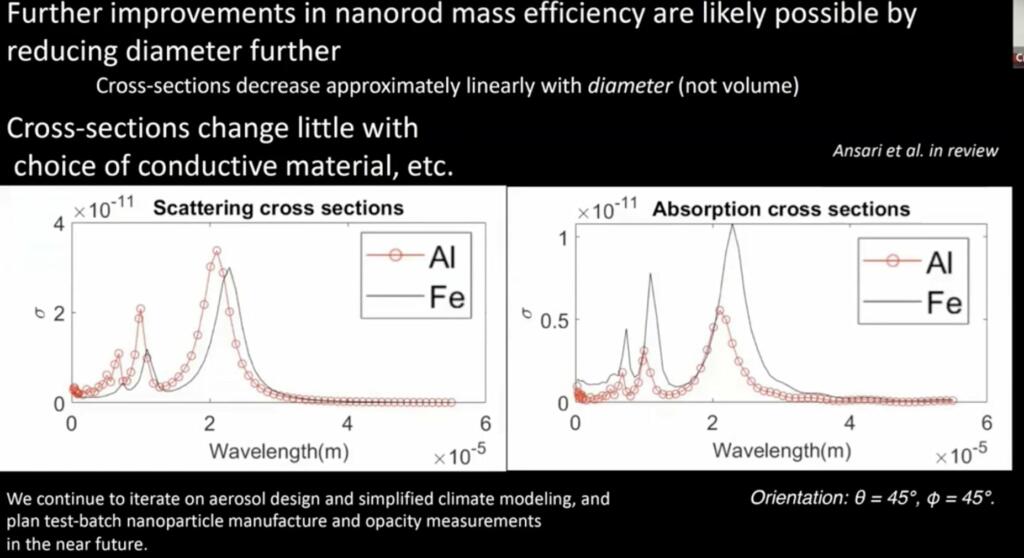

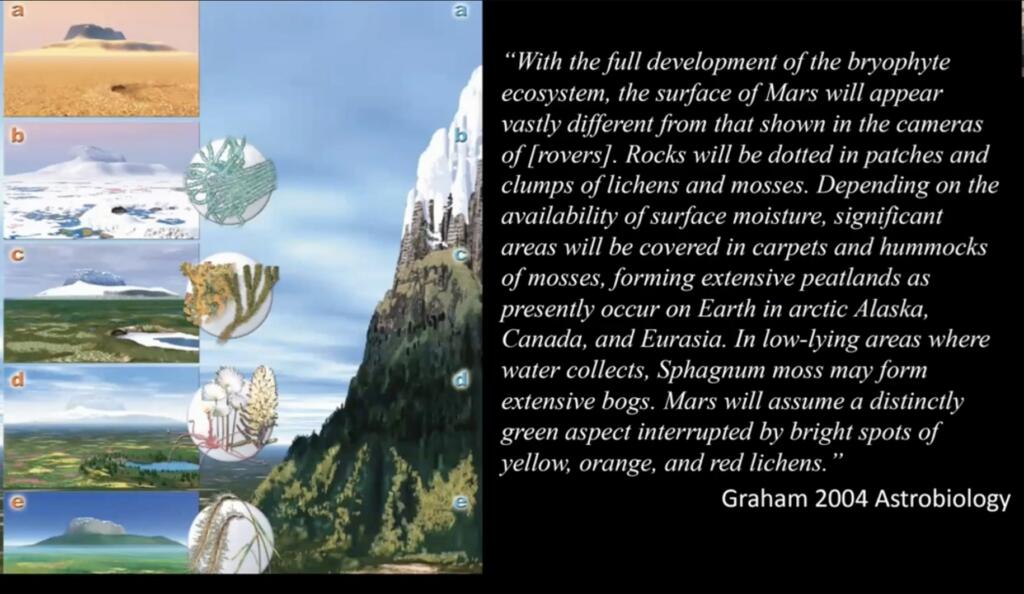
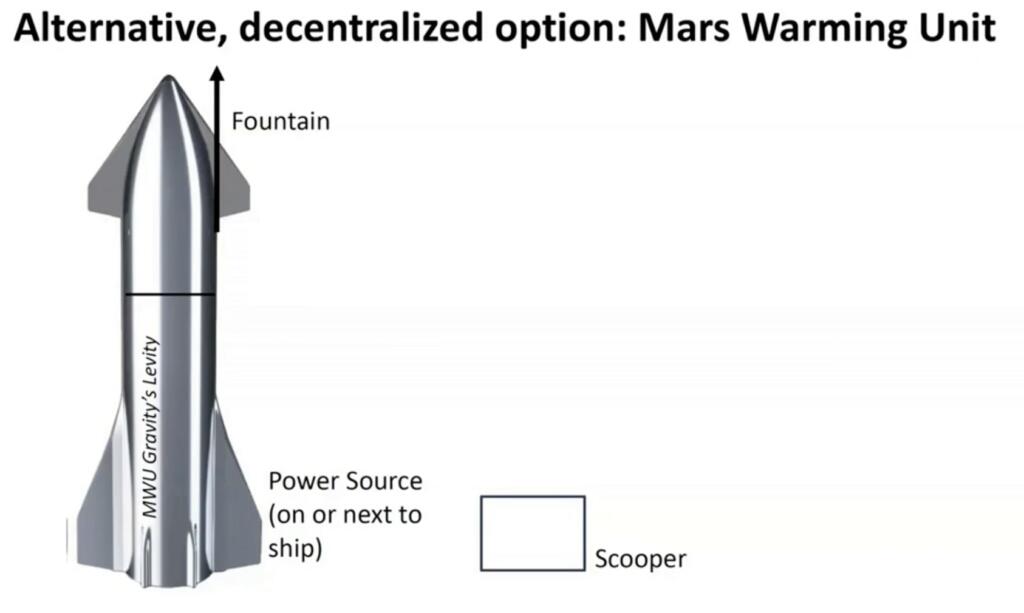
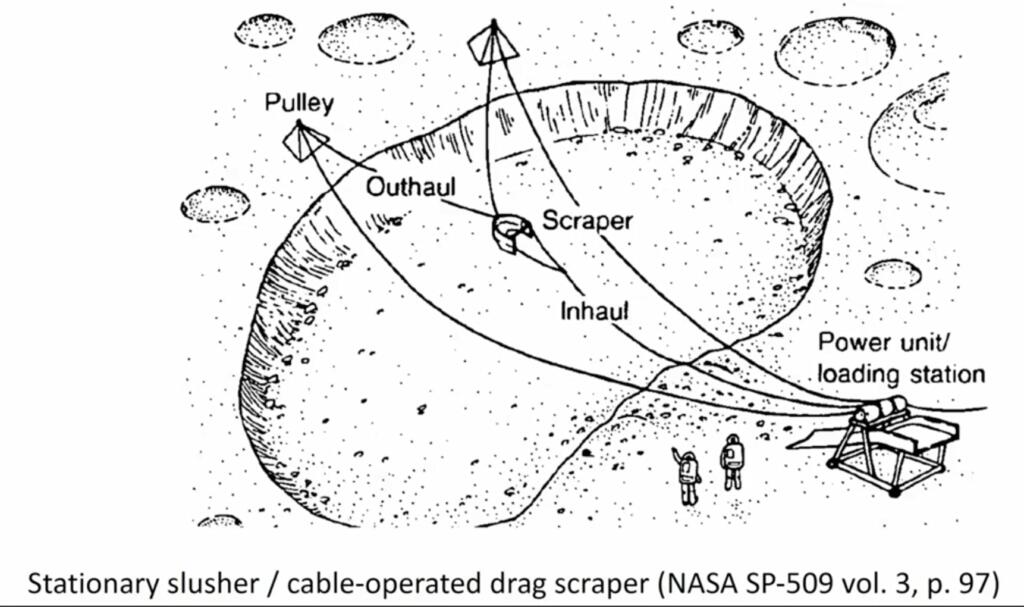

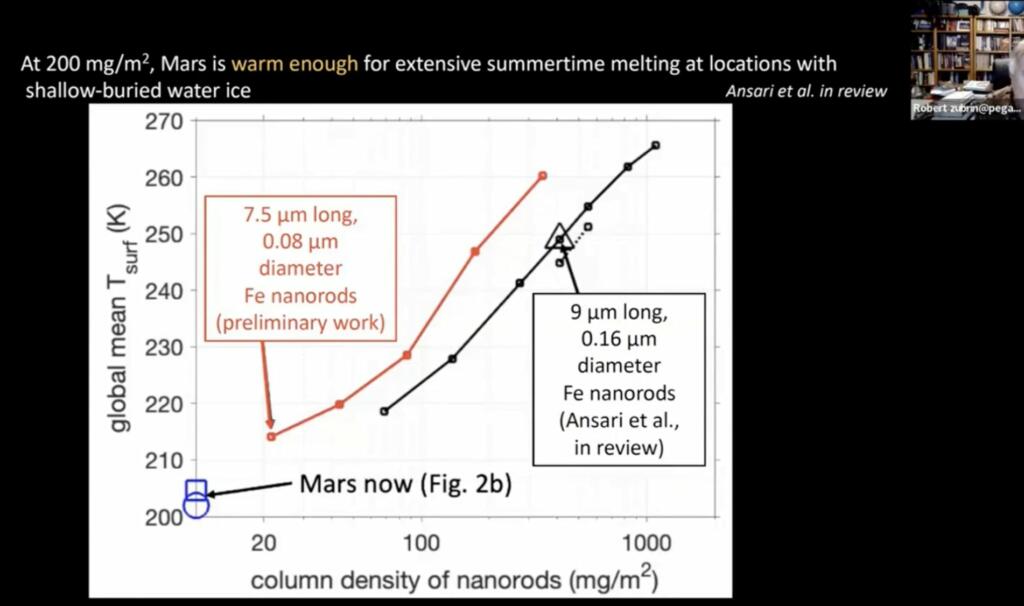

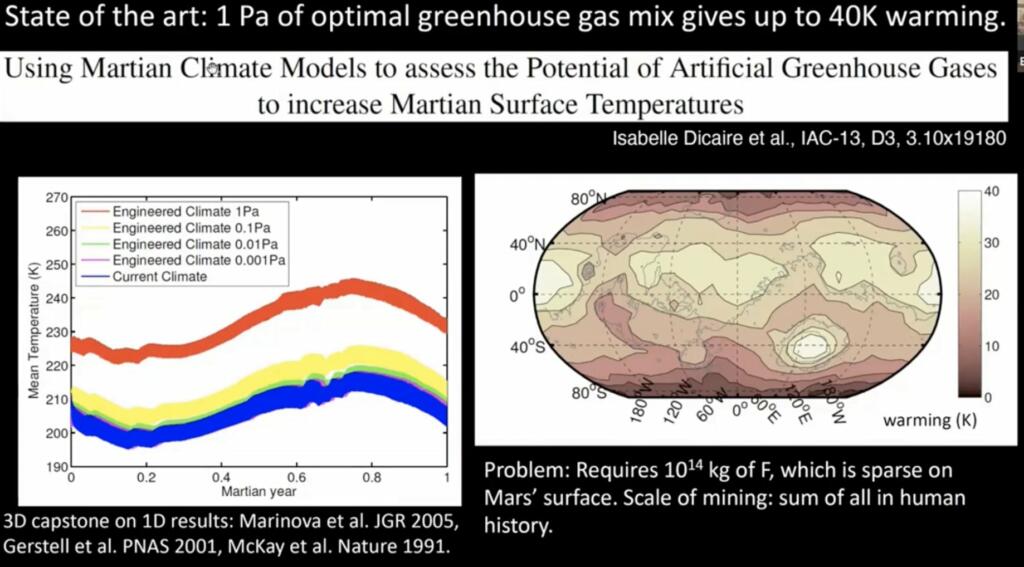
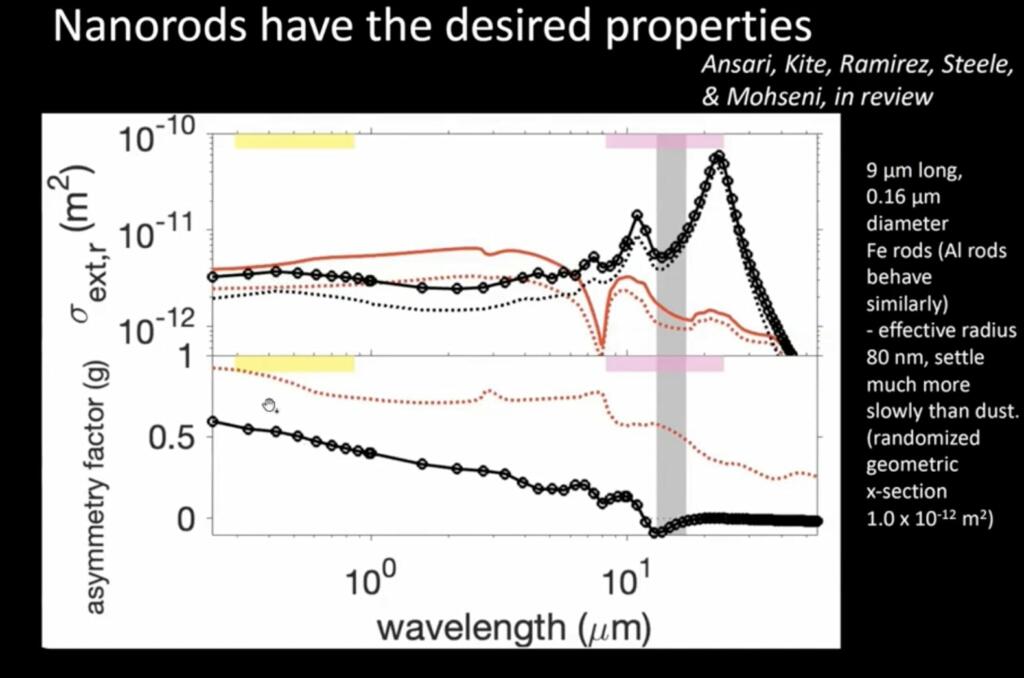


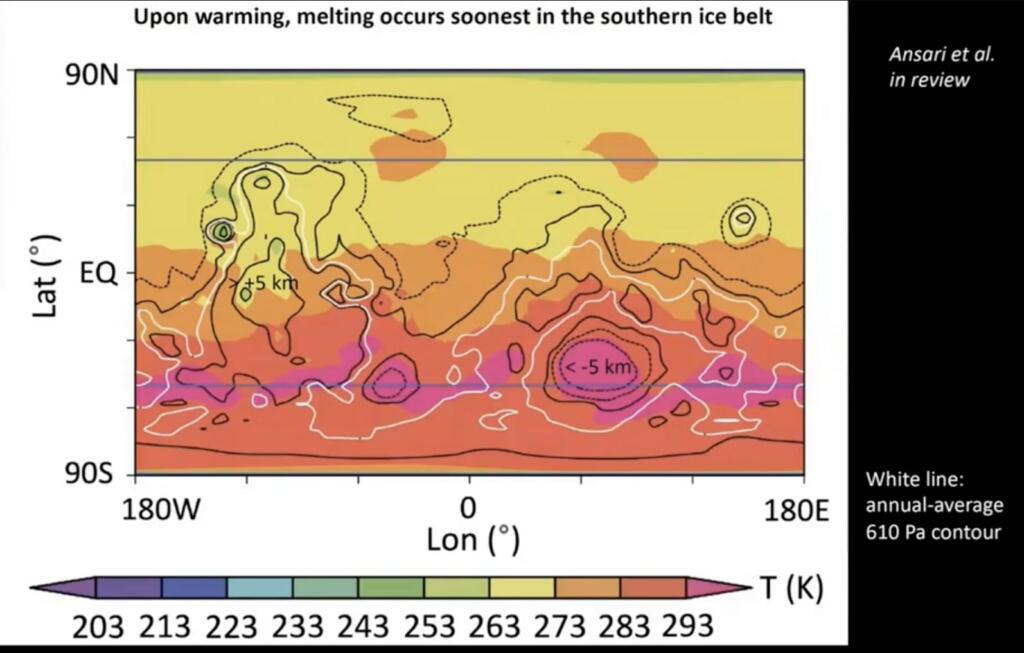

Brian Wang is a Futurist Thought Leader and a popular Science blogger with 1 million readers per month. His blog Nextbigfuture.com is ranked #1 Science News Blog. It covers many disruptive technology and trends including Space, Robotics, Artificial Intelligence, Medicine, Anti-aging Biotechnology, and Nanotechnology.
Known for identifying cutting edge technologies, he is currently a Co-Founder of a startup and fundraiser for high potential early-stage companies. He is the Head of Research for Allocations for deep technology investments and an Angel Investor at Space Angels.
A frequent speaker at corporations, he has been a TEDx speaker, a Singularity University speaker and guest at numerous interviews for radio and podcasts. He is open to public speaking and advising engagements.


You people are planetary chauvinist who want to hog all the mass for planets. Free the mass for space habitats!
Brian – Please cover/highlight the Spiroligomers stuff presented at the Foresight Institute by Christain Schafmiester. This is possibly the only way forward to making artificial enzymes to break glucosepane at present.
I’m with the others: These nano-rods will get into EVERYTHING. They’ll infiltrate the habitats. They’ll find their way into moving machinery. They’ll find their way into lungs!
We need to terraform Mars, not make it toxic.
Paraforming IS the way to go: You can start small, and expand.
Indeed. A sterile Mars of domed cities is way better than an unusable toxic wasteland. That alone wuld change the planet in the long term, both with planned and unplanned alterations.
But there are some things we don’t really want to do for terraforming.
Martian lowlands covered with blankets of moss. Where have I heard that before? When can we re-introduce thoats to Barsoom?
An atmosphere plant, too.
Never happen. Never need to happen. Not desirable to happen.
Today’s 80- to 120-YR-old humanoid-type population for our civilization is likely maxxing out at the low-billions for the coming centuries. This is not a worry. This isn’t to say that long-lived human types won’t want to set-up cities, outposts, businesses-as-they-would-be-then, and other ventures throughout the solar system and beyond in whatever generation ships, government fleets, research enterprises, hollowed-out NEOs based on whatever tech-, religious, or family-cults that wishes to seed the cosmos… but, we will spread. But we don’t need/want huge ‘planet surface’ space. We, each and everyone of us, may have an army of 1,000 teslabots circa 2100s to service our personal and empire needs, establishing our domains throughout the system. But the idea that there will ever be some Ray Bradbury-esque future of happy families ranching on an inner solar system with 6-legged green cows on recently terraformed planets is non-sensical. Why else have earth-aforming on other planets? Upgraded humans, remote AI, teslabot armies to build/maintain, etc., etc. will look upon Mother earth warmly, but will know that type of sometimes-temperate/sometimes-violent environment has outlived its idyllic usefulness and that we technically don’t need that. Even in the reasonable scenario of creating an Other Earth in case of deadly cosmic radiation, violent NEOs, and alien empires seeking resources, Earth doesn’t need a back-up. The rich, smart, and useful-visionary will plan for their future, look to the stars (inner system), and the rest will scrabble and suffer as befits their culture until they modernize and choose to ‘grow outward’. Better to think of establishing livable/survivable spacecraft and localized planet settlements than planet gentrifying.
My 2c.
Everyone who wants to take a fresh breath of nanorods, raise their hand…
Nano particles will get into everything so when we discover this is bad for life and machinery, Mars will be uninhabitable “forever”.
Just dig a 20 km crater on Mars and the atmosphere will pool there, creating an earthly local climate zone at the bottom.
Long term, move the CO2 from Venus to Mars and get two planets for the price of one. I saw someone suggesting using particle accelerators once. Solar power is cheap.
Other than that, engineer microorganisms to do any Terraforming. We know it works and it is really cheap. Once we get to self replicating machines, it will be like macroorganisms and they could perhaps accelerate the process.
They are not nanorods, but micrometer rods.
Longs and tissues can clear them out.
HEPA filters which deal with much finer particles can catch them easily.
And if they use metallic rods, they can be repelled magnetically or electrostatically from the vicinity of a base or individual.
They also leave the atmosphere reasonably quickly (years not decades) and you are not creating permanent but transitional situation between cold/low pressure and hotter/pressurized.
Conclusion: interesting approach, doable, quick and safe.
Gotta break it to you, they’re roughly the same size as the asbestos particles everybody freaks out about.
So you’ll need to prove that they’re biocompatable before even thinking about this.
And so are airborne bacteria in micrometers.
I am all or testing it out on biology. The idea is sound, and on second thought you could also replace them with other media offering the same benefits; i.e. micrometer rods could be made from DNA and molecules /oversized protein complexes with short lifespan (years) which are known to decompose in the body. One could also introduce airborne bacteria, even dead sterilized ones, of similar sizes cultured in vitro. The body knows how to deal with them.
Uhm, crater exists: Hellas Planitia, water vapor detected
It’s not going to work. Probably need a thousand times that amount just to have a small effect. People still don’t understand thermodynamics and are too focused on radiative effects.
Not buying it.
Besides, gradually puffing up volatiles means the Sun can knock them away at about the same rate they are introduced.
I have a soft spot for darkening Venus with sunshades at the VS-L1 point and having its atmosphere freeze in a century or so. A well developed fleet of Starships could send enough sail material for making the enormous statites required, once the right materials are developed, in terms of mass per area.
After the darkening, the atmosphere will cool off until reaching liquefying and freezing temperatures, covering the planet lowlands in a crust of solid CO2 with some liquid CO2 at -51/-60 degrees and 3.5 atm, controlled by allowing some insolation.
It would be gloomy and cold, but we could land there, because the atmospheric pressure would be higher than Earth’s but quite endurable for regular breathing gear and buildings, and with oceans of frozen CO2 we can then sequester or use.
No Earth, but definitely survivable.
Reference: http://www.thespacereview.com/article/4623/1
But if we take the new water discovery into account warming mars too much could turn the whole thing into a watery swamp – bad idea.
I would rather see artificial habitats and robots with no “terraforming” which is a throwback to old earth ways.
Just as on earth, there will be many adaptations that have to be made.
Hopefully, it will only take a century or two for Mars.
It took million of years on earth…
Paraterraforming is still the better solution. Quick. Breathable air. Sufficient pressure.
So there’ll be quintillions of nanorods contaminating the environment and threatening human health?
You would still not be able to breathe the atmosphere anyway. Would need a mask with breathable air, but could get away without a pressure suit.
Later what about nanorods in human lungs? And how can we solve the cosmic radiation problem?